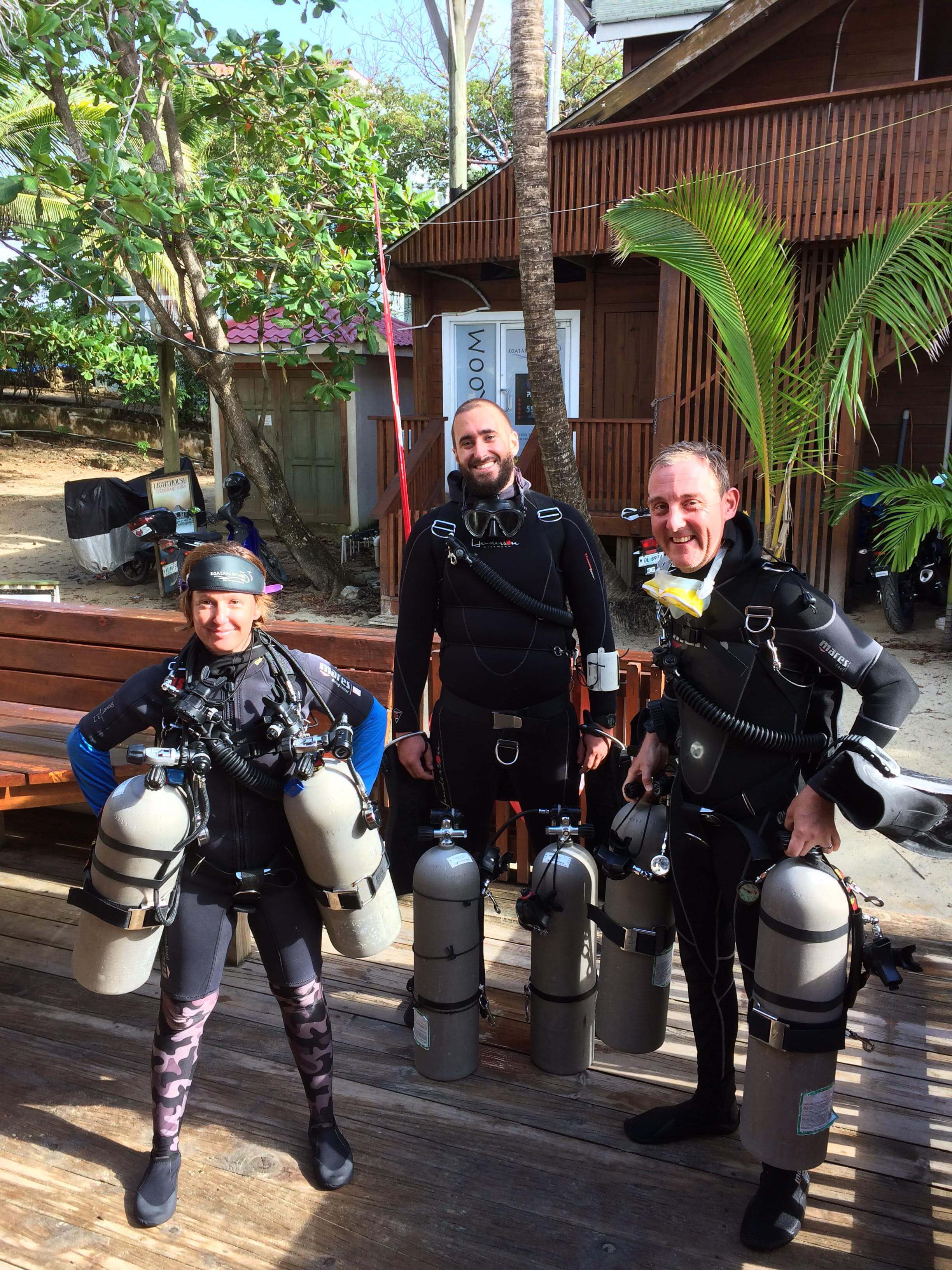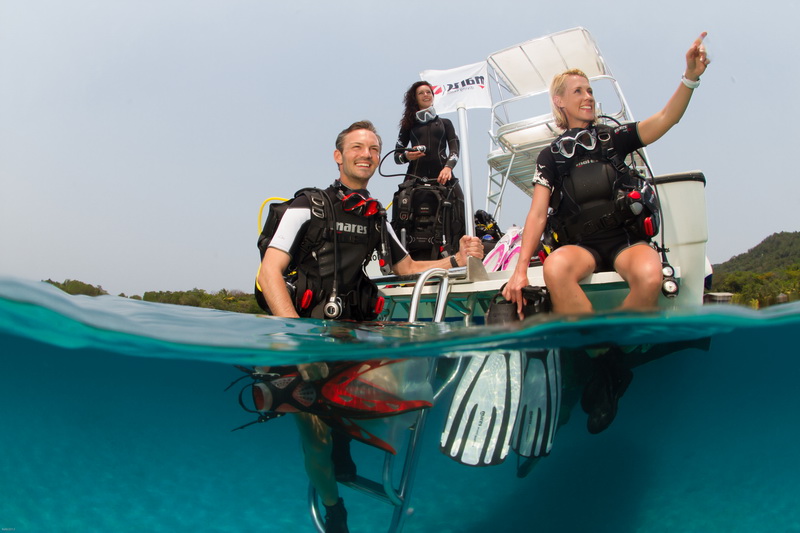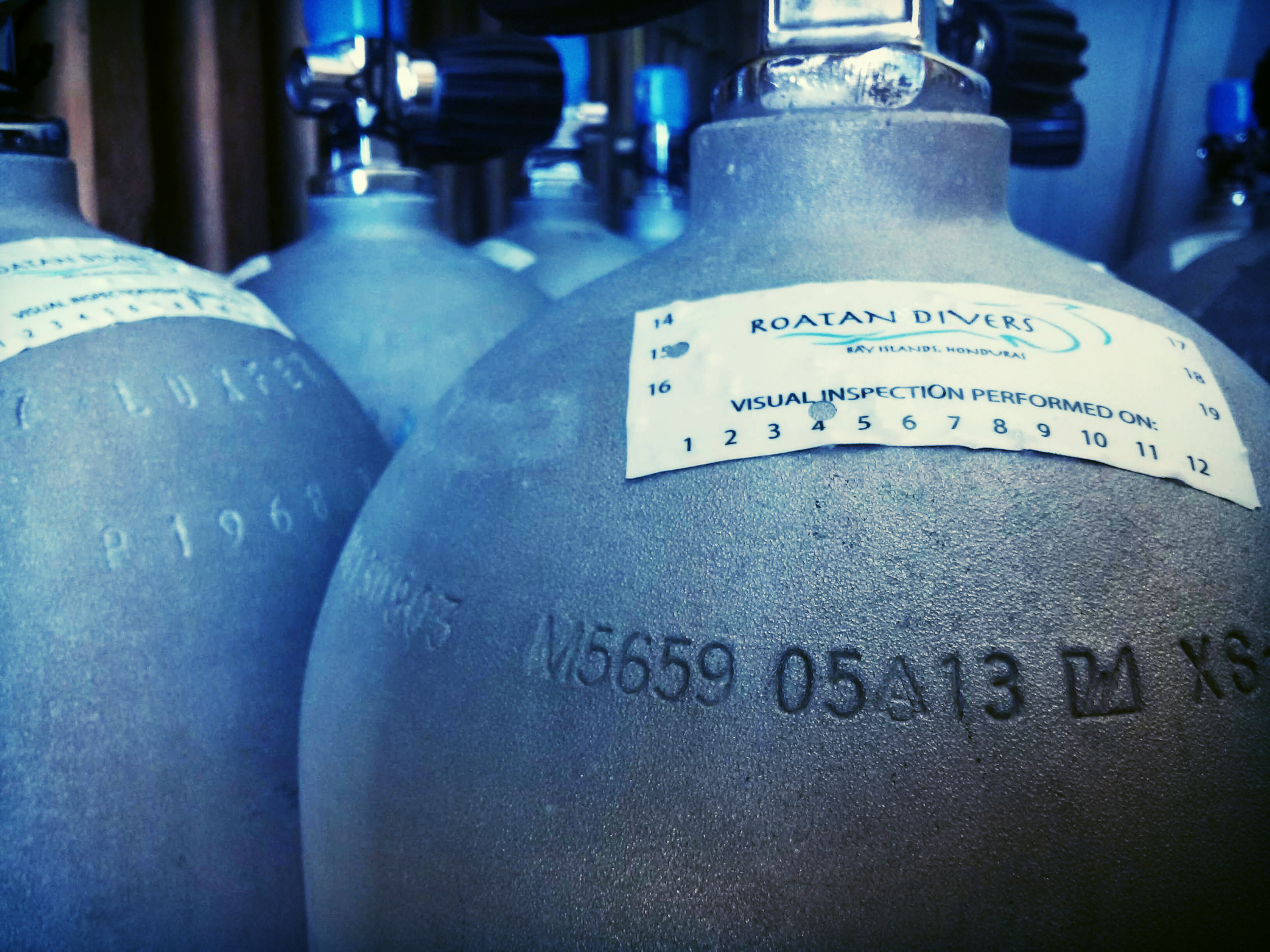Let's Talk Sidemount Diving!
You may have seen in our recent social media posts that we are all about sidemount right now. So it’s a great time to ask - what is sidemount diving, and what are the benefits of diving on a sidemount set-up?
You may have seen in our recent social media posts that we are all about sidemount right now. So it’s a great time to ask - what is sidemount diving, and what are the benefits of diving on a sidemount set-up?
What is Sidemount Diving?
Sidemount diving is when you dive with two (or more) tanks streamlined along your side, rather than mounted on your back. Our head sidemount instructor, Liam, will tell you that sidemount is the best because “one tank is good, two tanks are better”, but there’s more to it than that!
Sidemount diving gives you redundant systems, it’s great for diving in narrow spaces because you’re so streamlined, and is also great for divers who have back problems because the harness set-up alleviates any stress on your back that a backmount system would put. Sidemount is a highly versatile system that you can customize for different types of diving, whether it’s with aluminum or steel tanks, tropical or cold climates, caves or wrecks, tec diving, deep diving, self-reliant diving - the list goes on.
On top of all the actual reasons to dive sidemount, sidemount diving also just looks cool, if we’re being totally honest.
Roatan Divers PADI Sidemount Course and Bundles
Now that you know why you should go sidemount diving, it’s time to find out how!
Roatan Divers offers the PADI Sidemount Diver course for $400, including PADI manual, certification fee, confined water work, 4 sidemount dives, equipment, taxes and credit card fees. The course normally takes 3 days.
We’ve also created some awesome bundles to help you get the most out of your sidemount training. Sidemount’s versatility means it can be paired with so many other PADI specialties, but these are three bundles that we think you’ll enjoy.
Sidemount + PPB bundle: $500, including 2 PPB dives on sidemount equipment and 3 sidemount training dives (5 dives total).
Sidemount + PPB + Nitrox bundle: $650, including 2 PPB dives on sidemount equipment, 3 sidemount training dives with the last 2 dives on Nitrox (5 dives total).
Sidemount + PPB + Deep bundle: $825, including 2 PPB dives on sidemount, 3 sidemount training dives and 4 Deep Dives on sidemount (9 dives total).
Whether it’s with the standalone PADI Sidemount course or one of our bundles, you’ll walk away feeling well-trained and well-versed in sidemount diving.
Roatan Divers and Dive Rite
For our recreational scuba needs, Roatan Divers is still proudly partnered with Mares, so you can get of the best recreational equipment in the industry at a great price with the Roatan Mares store in West End.
Why We Love Mares Dive Equipment
Dive equipment can say a lot about a dive center. When equipment visually looks worn and tattered it might also speak to the care and maintenance that equipment may or may not have received in its lifetime. At Roatan Divers, we replace our rental BCD's every 1 to 2 years, not because we need to, but because we take pride in offering top-notch equipment to our divers. When prospective divers ask to see our equipment, we're always happy to oblige them.
Roatan Divers is a proud Mares Dealer
As a Mares partner and dealer in West End, we are very proud to offer all Mares equipment for our rental gear. Mares is one of the biggest scuba equipment manufacturers in the world, and it's not hard to see why! While they have a reputation for high quality equipment ranging from BCDs to regulators to dry bags, they are most famously known for their masks and fins. The Mares Avanti fins (both full foot and open heel) are considered some of the best fins on the market - there's a reason why most scuba instructors use the Avanti open heel fins! They are durable, strong and last forever. When Roatan Divers first started, we knew without a shadow of a doubt that the Mares Avanti would be our rental fin of choice, regardless of what other brands were available for other rental gear.
Dive equipment can say a lot about a dive center. When equipment visually looks worn and tattered it might also speak to the care and maintenance that equipment may or may not have received in its lifetime. At Roatan Divers, we replace our rental BCD's every 1 to 2 years, not because we need to, but because we take pride in offering top-notch equipment to our divers. When prospective divers ask to see our equipment, we're always happy to oblige them.
Mares Roatan Store in West End
Luckily for us, Mares has a store conveniently located in West End, so we have been able to provide a full range of Mares equipment for rental. The Mares store is fully stocked with a range of masks, fins, exposure wear, BCDs and regulators, so it's easy to find something that will work for you, whether you're a casual snorkeler or an avid diver.
For many of our guests, they love the ability to try one of our Mares masks to find which one might be the best fit for them before purchasing. The prices here are competitive to the prices in the US, and it's nice having a professional to talk to before buying!
Check out Roatan Mares Store's Facebook page to see what deals they're running, as they often have great sales. For more information about some awesome deals we are now able to offer our Divemaster and Instructor candidates through our partnership with Mares, make sure to check our dedicated Divemaster website!
Tips for Maintaining Scuba Cylinder Health
Out of all your scuba diving equipment, your scuba cylinder is the unsung hero of it all. We have a tendency to focus on the quality and maintenance of the wetsuits, BCDs and regulators of wherever we go diving, but not on the most important feature of your scuba equipment, and your lifeline.
Out of all your scuba diving equipment, your scuba cylinder is the unsung hero of it all. We have a tendency to focus on the quality and maintenance of the wetsuits, BCDs and regulators of wherever we go diving, but not on the most important feature of your scuba equipment, and your lifeline.
Scuba cylinders are filled with filtered, compressed air. The air is taken through the air intake of the compressor and passes through a filtration system, where particles and moisture are filtered out of it. However, even with the proper filtration systems, scuba cylinders still need to be inspected once in a while to ensure that they are in proper working order. The two inspection requirements are the visual inspection and hydrostatic test.
1. Visual inspection
Scuba cylinders should be visually inspected once a year by a qualified visual cylinder inspector. In a visual inspection, we empty the tank, take the valve off the top of the cylinder and take a look inside for corrosion, aluminum alloy build-up and moisture. Whenever you dive somewhere, make sure to check for the visual inspection sticker. If it's not there, ask the dive center when their last visual inspection was.
Always check visual inspections before you dive
2. Hydrostatic testing
Scuba cylinders should normally be tested every two to five years, based on local laws and regulations. In a hydrostatic test, the cylinder is normally filled to 5/3 of its normal fill capacity, and then cylinder walls' flex is tested. Hydrostatic testing is imperative to maintaining the integrity of tanks, and therefore imperative to maintaining your safety. Scuba cylinders will have the last date of hydrostatic testing embedded into them. Most local laws and regulations will not exceed five years for hydrostatic testing requirements, so if the last date of testing was over five years ago, make sure to ask about it.
This tank was hydrostatically tested in May 2013
Here are some tips to help maintain your scuba cylinders:
1. Don't ever empty a tank completely.
Pressure inside the tank prevents water from entering it. Make sure never to empty your tank too quickly either, as that can cause condensation to build up on the inside and outside.
2. Have your tanks filled only by reputable scuba air stations
If a guy is filling scuba tanks out of the back of his van, the air probably isn't going to be super clean. Remember, even minute percentages of contamination, such as carbon monoxide, will be greater under pressure, so you want to make sure your air is clean to prevent such issues.
An analysis certificate from Trace Analytics, based on a quarterly air sample
Air stations should get their air tested, preferably quarterly. We use Trace Analytics, an independent testing lab in Texas. We send them air samples every three months, and they send back the results to let us know if the air passes. Air testing is a great way of also checking on the compressor's health, because if the air doesn't pass, it's a sign that there may be something wrong with the compressor as well.
3. Store your cylinders in a cool, dry place
Extreme heat is the death of scuba cylinders, so avoid putting them under extra pressure and keep them out of the sun. Also make sure to keep them standing in a cool, dry place where they can't get knocked over.
Our scuba cylinders are such an important part of our scuba equipment, so make sure not to neglect them! Remember, maintenance is key when it comes to anything, so keep all of your scuba gear well-maintained and serviced and you will get many years of diving with them.
Happy diving!











